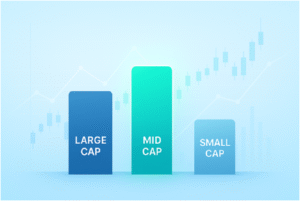
In the world of stock investing, individuals often gravitate toward two dominant strategies: seeking consistent income through dividends or pursuing long-term capital appreciation through growth stocks. Both approaches have their merits and risks, and understanding how dividends fit into the broader investing landscape is crucial for making informed financial decisions.
This article explores the function of dividends, compares income and growth investing, and provides insight into blending both strategies to meet your financial goals.
What Are Dividends?
Dividends are payments made by companies to their shareholders, typically drawn from profits. When a company generates excess earnings, it may choose to distribute a portion of that surplus back to its investors in the form of dividends. These payments are most commonly issued in cash, but some firms also provide stock dividends or declare special one-time distributions during periods of unusually high profit.
Dividends are usually paid on a quarterly basis, although some companies opt for monthly or annual schedules. For investors, dividends represent a tangible return on investment regardless of market price movement. It’s also important to consider the tax implications of dividend income. In many countries, qualified dividends are taxed at a lower rate than ordinary income, making them more attractive for long-term investors. However, the exact tax treatment varies depending on jurisdiction and account type. To get started, get more info here.
Income Investing: Harnessing Dividend Stocks
Income investing revolves around acquiring stocks that provide a reliable and consistent stream of dividend payments. This strategy is particularly appealing to individuals seeking regular income, such as retirees or those looking to supplement other revenue streams. Companies that pay dividends are typically mature and financially stable, often operating in sectors like utilities, telecommunications, or consumer staples.
The appeal of dividend investing lies in its perceived stability. Even during periods of market turbulence, dividend-paying companies may continue to distribute earnings to shareholders. This income can be used for living expenses or reinvested to take advantage of compounding. Reinvestment through dividend reinvestment plans (DRIPs) allows investors to automatically purchase additional shares using the dividend payout, which can significantly enhance returns over time.
Growth Investing: Reinvesting for Capital Appreciation
Growth investing focuses on purchasing stocks that are expected to grow significantly in value over time. These companies typically reinvest their profits into research, innovation, expansion, or acquisitions rather than distributing them to shareholders. The goal of a growth investor is not to collect income from dividends but to realise capital gains by selling the stock at a higher price in the future.
Growth companies are often found in dynamic sectors like technology, healthcare, or e-commerce. Because they prioritise reinvestment, their earnings potential may outpace that of dividend-paying firms. Over the long term, the compounding effect of business expansion can lead to substantial portfolio appreciation.
The trade-off is that growth stocks often come with higher volatility. These companies are more sensitive to changes in market sentiment, economic conditions, and investor expectations. Additionally, during prolonged market downturns, the lack of dividend income can be a drawback for investors who depend on consistent cash flow. Patience and a long-term outlook are essential for this strategy to succeed.
Dividend vs. Growth: Key Differences
The distinction between dividend and growth investing often comes down to the nature of returns. Dividend investors prioritise consistent cash flow, while growth investors aim for capital appreciation. These strategies also attract different types of investors depending on financial goals, risk tolerance, and investment horizons.
Income-focused investors typically favour companies with a track record of stable or increasing dividend payouts. These stocks may not see explosive price growth, but they offer predictability and lower volatility. In contrast, growth investors are often more aggressive, willing to accept short-term price swings in exchange for potentially higher long-term gains.
Tax implications also differ. Dividends are taxable in the year they are received, while capital gains are only taxed when the stock is sold. Investors should consider how their choice affects their overall tax efficiency, especially when investing in taxable brokerage accounts.
Blending Strategies: The Best of Both Worlds?
Many investors discover that they don’t have to choose between dividends and growth. A blended strategy can offer both consistent income and long-term appreciation, creating a more balanced approach to wealth accumulation. This is often referred to as total return investing, which considers both income and capital gains when evaluating performance.
One way to achieve this balance is by investing in dividend growth stocks—companies that not only pay dividends but also consistently increase them over time. These firms often show strong business fundamentals and the ability to grow profits, providing both cash flow and capital appreciation. Sectors like healthcare, industrials, and select tech firms often house such stocks.
Conclusion
Dividends play a crucial role in stock investing, offering a reliable income stream that appeals to many investors, especially those seeking stability. At the same time, growth investing provides the potential for significant capital gains and wealth creation over time.
Each approach has distinct advantages and is suited to different investor profiles, goals, and market environments. Rather than choosing one over the other, many investors find success by integrating both strategies into a diversified portfolio.






